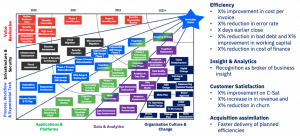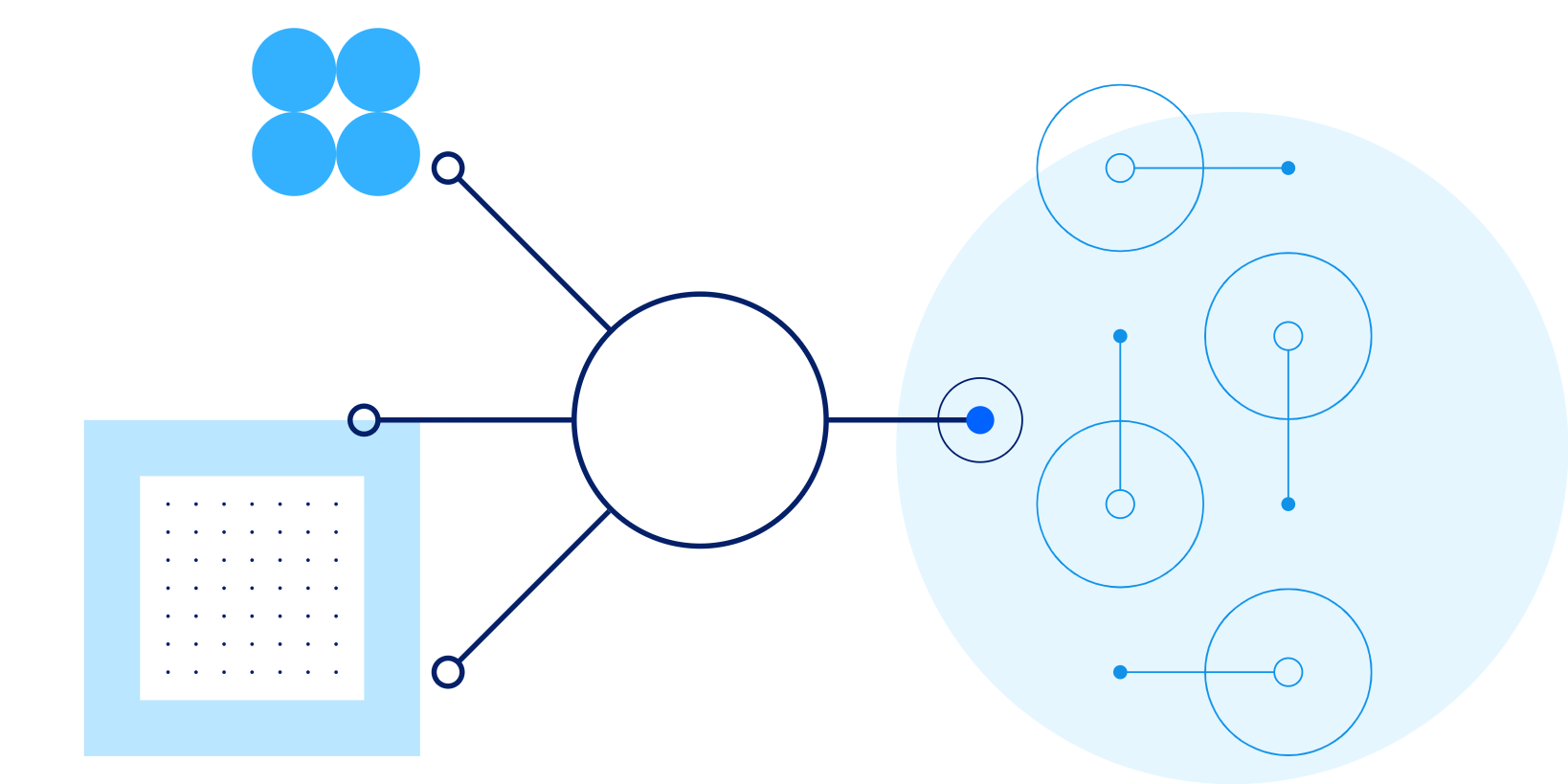Perspectives
CFO: the restless reinventor – Chapter 5
3 March, 2020 | Written by: Rupert Clegg and Bob Booth
Categorized: Perspectives
Share this post:
Tackling the competition through transformation
As we have explored in this series, CFOs are entering a brave new, cognitive and digitised world. The way organisations interact with their customer base, absorb and understand the avalanche of data is critical for CFOs and their teams in terms of decision-making agility.
IBM’s Institute of Business Value study discovered that Finance Directors typically face the following challenges when trying to adapt to the new digital world:

Each of these challenges come with unprecedented concerns for CFOs as to what to prioritise and how best to transform their organisation. Fundamentally, CFOs must not only critique existing structures, but also find a way to transform their core.
As a starting point, IBM recommends CFOs architecting the transformation of their company with the following imperatives in mind. First, adopt flexible operating models to quickly respond to market changes. At the heart of the Cognitive era there are the emerging technologies that need to be integrated into operations. That is how reinvention at scale happens. Then, with these two elements in place, it’s time to accelerate speed to value from new sources of efficiencies and growth. On top of all sits customer-centricity. Use the engagement with customers, suppliers and employees to create value.
IBM supports organisations in their journey to becoming a Cognitive Enterprise through its leading Design Thinking methods and the adoption of disruptive technologies. IBM’s enterprise-led transformation methodology takes an agile approach to developing organisations’ operating models and supporting the rapid future technological change required by today’s finance organisations. The illustration below shows how such a transformation journey can be achieved:

IBM uses this methodology to fundamentally reinvent customer-centric, end-to-end processes that are optimised for the new AI-driven technology, including intelligent workflows.
For example, in 2019 IBM helped a telecommunications client to transform its transactional order process into a customer-centric, digitally enabled process. This resulted in transformational processing efficiencies and equivalent zero erroneous handling during the processing phases. At the end of the day, the company saw a 100% billing accuracy, 30-40% reduction in cycle time order receipt/hand off, and an increase in customer satisfaction of up to 50%.
The CFO looking to undertake a holistic transformation programme across her/his business needs to consider a broad number of topics:
- In Chapter 1, we discussed the impact of competitors using AI and other technologies and about the criticality of data, and about the new skills and talent needed to transform.
- In Chapter 2, we discussed workforce enablement and the use of AI and other tools to augment the capabilities of colleagues finance and the wider business.
- In Chapter 3, we discussed the capabilities and skills needed for workforce enablement to harness these new technologies and new ways of working.
- In Chapter 4, we covered how the CFO can become the broker of insight across the business.
In order to bring these elements together, and align with changing ERP strategies, decisions to move to cloud, whilst driving business outcomes, such as top-line growth, cost reduction, business agility, the need to drive regulation compliance and risk mitigation, we suggest taking a human-centric approach to transformation.
Our Experience Led Transformation approach considers the impact of all elements of transformation on customers, on employees, suppliers and regulators. We use a combination of Design Thinking to assess the experience of the Personas engaged in a transformation, and business capability models that assess critical business and technology capabilities, to build a business case and end to end holistic transformation programme. This Transformation Map joins together all of the necessary components of a transformation programme on one page.

This Transformation Map sets out the transformational journey to the Cognitive Enterprise, which we have shown in more details for CFOs and CPOs in white papers.
As we come to an end of this series, we hope you are as excited as we are about the opportunities facing the CFO at this vital point in business history. IBM has the ideal combination of deep technical knowledge, theoretical understanding and pragmatic finance experience to partner with you on this journey.
Further client insights can be found at the IBM website. You can also learn how IBM helped Generali to become a Cognitive Enterprise by watching this video.
We’d love to talk to you about your vision for the future.
Please get in touch or visit our website to find out more.

Finance Practice Leader, IBM Global Business Services, Europe

Vice President, Cognitive Process Reengineering, IBM Services Europe
Generative AI: driving a new era of HR transformation
Helen Gowler, Partner, EMEA Talent & Transformation Lead Today, I’m proud to be part of a company that’s committed to addressing gender bias in the tech industry. IBM is pioneering the use of AI to tackle this issue, and I’m excited to contribute to this effort. Our team is developing AI models that can detect […]
Multi-Modal Intelligence Platform
Traditionally, data management systems provided only numerical or textual based business intelligence primarily for back-office users across finance, sales, customer management and supply chain. Today, we are increasingly seeing data management systems which drive key business functions requiring interrogation of multi-modal data sets from documents, presentations, images, videos to audio. This demands a more sophisticated […]
The use of GenAI to Migrate and Modernise Organisational Core Programming Languages
GenAI is hugely powerful and supports a diversity of use cases by focusing on routine work – allowing people to focus time on value-add tasks, thus enhancing productivity. The focus of this use case is for an organisation which had previously focussed on a legacy set of tooling and programming languages and needed a way […]


